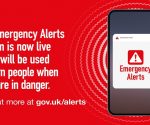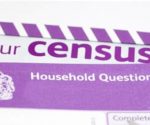With its usual low cunning, UK Government uses booster jab rollout failure to its advantage
On 30th November, when Boris Johnson announced lockdown and mitigation measures against the so-called “Covid-19” variant, so-called “omicron”, and he also made the silly remark about ““boost[ing] the booster”, it was clear that it was all for invigorating a third dose “vaccine” rollout that had been flagging since its launch in October.
At that time, 14,031,953 in England had received a booster jab, compared with 20,403,324 second jab recipients of any adult age who were eligible by dint of having had the two doses at least six months previously. Of course, because of the way that UK Government has been dispensing the booster to demographic groups at a time, not all adults could have a third dose administered to them if they otherwise qualified, but were not in the current target age group. That being said, the first and second doses had been dispensed, for the most part, in the same take-it-in-turns-by-age-group way, so the people who had gone missing for their third jab were not generally excluded by any clumsiness of the system. On the contrary, most of the over 6 million people who could have had a booster but had not must have been folks who were opting not to.
Such resistance so early on in the booster programme, even without the troublesome age groups (18-49) yet being invited to participate, must have troubled UK Government a good deal. Cue the invention of “omicron”, so that when Boris Johnson held a press conference on 8th December, and to announce changes in criteria for booster availability, he could say this:
As Omicron spreads in the community, we will also introduce daily tests for contacts instead of isolation, so we keep people safe while minimising the disruption to daily life.
And of course we will take every step to ensure our NHS is ready for the challenges ahead. But the single biggest thing thing that every one of us can do, is to get our jabs and crucially to get that booster as soon as our turn arrives.
One year to the day since the UK became the first country in the world to administer a Covid vaccine into the arms of Margaret Keenan, we have opened up the vaccine booster to all those over 40, and we are reducing the gap between second dose and booster to a minimum of just three months.
At that point, 17,510,155 had received a booster in England, compared with 23,710,646 twice-jabbed with the six month interval applying (and 36,422,613 after three months). It was quite obvious that shortening the intervening period would make the belatedly second jabbed, in all age demographics above 39 years, immediately eligible for the booster, and quite obvious that this was about harvesting as many “vaccinated” as possible as soon as possible.
In Boris Johnson’s Sunday, 12th December press conference, indicating a good deal of desperation, the one-at-a-time-by-age-group methodology was abandoned, and the intent to dispense as many boosters in as short a time as possible was made quite apparent:
From tomorrow in England, we are opening up the booster to every adult over 18 who has had a second dose of the vaccine at least three months ago.
At this point in the rollout, the number of people in England eligible for a booster (with the three month interval applying) was 36,736,520, but only 18,928,764 had received one. The Sun, from whence the above quote comes, called Johnson’s press conference the launch of a “‘national mission’ to beat Omicron”, but in reality, it was the second relaunch of a project that was stubbornly being refused by the public. The very fact that the qualifying criteria for having a booster jab had to be changed, and that all demographics were suddenly made eligible at once absolutely cries out failure. As it was explained here at FBEL at the time, such remedy has already been resorted to in the “vaccine” rollout during its lifetime in 2021, and is suspected as being a device to deal, in a Public Relations way, with decreasing demand. In this case, with six million already refusing, offering out boosters piecemeal to 40-49 year-olds, and then 30-39 year-olds, and so on, there would be recurring moments of inevitably low take-up once all the people in each demographic who wanted a jab had got one, and it would not look good against the confidence of UK Government and the impression it wanted to impart of a country eager to undergo the procedure. Everyone under 49 was invited to participate more or less all at once because it would mean the processing all at once of a great number of that class of people who wanted to be “vaccinated”.
The numbers of boosters administered in England after the 12th December certainly did do much better after the 12th, growing soon to half a million per day, and then reaching a record 830,403 on 18th December, and continuing to reach the three-quarters of a million mark for four days after that. On 23rd December, a comparatively poor half a million received a third jab, and on Christmas Eve, it was only 153,690. Although “vaccination” centres did remain open in England across all this year’s four holidays, only half a million received a booster in that period. In the days after that, ahead of the end of 2021, the rate returned to a little above 300,000 per day – perhaps indicating that the booster campaign has run out of steam‡.
Of course, if age demographics are serviced all together so that, for Public Relations’ purposes, as many of the willing as possible are serviced as soon as possible, it means that that inevitable end of demand will come all at once as well. Indeed, for UK Government to set a target, like it did, for all eligible adults to be invited to have a booster by the first day of 2022, is something absolutely all about appreciating that demand will disappear. In this way, at least, it could put a great spin on the level of participation as if it was in response to the asking for it. In truth, if the booster programme is actually dead, with around 9 million (as it stands in England today) having had the second jab but not the third (with the three month interval applying), it doesn’t make UK Government look very successful.
Curiously, corporate-media has in fact been managing expectation to reflect this very outcome. On 19th December the Daily Mail published an article with the headline, “Boris Johnson’s pledge to get every adult a booster jab by New Year looks a bust with 26million still to go (etc)”. The story then goes on to convey how a rate of one million jabs a day to “vaccinate” all eligible adults would have to be doubled. However, there is perhaps much more to this than meets the eye, because the numbers are too high. To be clear, before proceeding, the Mail is talking about the population of the UK, not just England.
According to the NHS England data that this site has used throughout its coverage, the number who had received a booster by the end of 18th December was 22,820,062. This was 14,328,050 less than those who had had a second jab at least 3 months previously. Using 85.4 as the number that represents the percentage of the English amongst all UK residents (as can be gleaned from other data used in the Mail article), it can be estimated, based on the NHS England data, that nearly 17 million people in the entire UK would have been missing their booster on that day.
Clearly, the Mail, is overstating the number that would have been eligible for a booster, and this is interesting, because doing the rounds very energetically at the same time was a story, published 17th December, by the evidently very well followed (but not so equally financially supported†) alternative media called The Expose. It claimed that 23.5 million people in England were entirely unvaccinated.
On closer inspection, the figure is in error.
The people who conceived the article (it does not seem to be claimed by one author) broke down an estimated figure for the entire population of England of 56 million, and did it into 8.2 million children under 12, and 47.8 million children and adults eligible (according to the official proclamations) for a “Covid-19 vaccination”. It then treated its estimate of the population of England eligible for a vaccine as if it were the total population, and applied to it a percentage of all English vaccinated (whether eligible or not), as published by the UK Health Security Agency – which was 67.9%. This was the percentage of all the population in England, said the UKHSA, to have had one dose of “vaccine”. The Expose article then found 32.1% of 47.8 million – 15.3 million – and then added to it the number of children under 12. This is how it found 23.5 million unvaccinated.
Of course, if The Expose had found 32.1 % of its total population estimate (meaning, 17,976,000), it would have no business adding on under-12s (because the UKHSA’s percentage was related to entire population). Indeed, to find the number of eligible and “unvaccinated”, the 8.2 million under-12s would need to be subtracted to find 9.8 million – a figure in the ballpark of reality (reflecting a larger but realistic estimate for population of England), and a lot less than the sensationalist headline one of 23.5.
The fact that this “error” is one that really shouldn’t have happened, and that it forms such an easily sprung fake news trap, which none other than FullFact.org has activated, tells the author that The Expose is controlled opposition (and with that declared, the author does not expect to be sent links to it, either in emails or comments, nor to receive any such like contact promoting stories that emanate from it).
Moreover, considering the Mail’s output, and stuff like that which follows from iNews (also published 17th September), there might have been a coordinated effort to generate a zeitgeist where it was understood that there hadn’t been enough “vaccination”:
The Government has accepted that it is impossible to hit its target of providing a booster jab to everyone that wants one by the end of this month due to the millions expected to contract Covid by Christmas Day.
If the current rate of growth in the Omicron variant continues 2.5 million people could have contracted Covid by Christmas Day if no further restrictions beyond the Government’s Plan B measures are put in place.
Note the repeat of the threat to Christmas Day that featured large in corporate-media coverage in relation to “omicron” in the run up to the holiday. It was suggested in these pages that this was about encouraging people to take tests, and enable the appearance of an “omicron” problem that in fact didn’t, and doesn’t exist.
Indeed, with great interest we must note that there is a post-Christmas continuation of the operation, in a slightly differently packaged way, as demonstrated by this extract from a December 31st Guardian article:
A huge number of people in England are not turning up for their Covid vaccine appointments, health leaders have said, saying as many as 40% of bookings are missed.
The revelation comes as the government claimed to have met its coronavirus booster jabs target, and that every adult in England had been offered a top-up shot.
The NHS Confederation said it was “encouraging” to see people coming forward and getting their Covid-19 jabs but that it was receiving reports that some sites were only a third full.
People have been urged to get the booster jab to tackle a growing number of cases of the Omicron variant of the virus. Confirmed daily Covid cases in the UK hit yet another high on Thursday, with 189,213 reported in the past 24 hours, while the number of people in hospital and deaths have also risen, data reveals.
Note, reader, the soft success being claimed by UK Government – which will say that it only ever claimed that it had a target to invite people to have a booster – at the same time as some degree of failure is being lamented. All very clever propaganda. The effect on the will-do-as-told Good Briton reading it must be a feeling of insecurity motivating him to feed the mirage by taking umpteen tests until a positive one can be produced. Verily, the mixed messages about booster take-up are all about continuation of the “omicron” con – and UK Government has been most comprehensive in the use of its assets in the execution of the operation.
† With over one hundred comments on the article, the audience must be huge – not to be wondered at, for the appetite of the consumers of alternative media to be gulled is insatiable. But, as we are told in the site’s aggressive begging, “less than 0.1% of readers currently support us even though we rely on solely on your support”. This is conveyed on a banner across the top of the page, which will be put away when there are funds to support for another year, creating the appearance that the site is manifested entirely through a financially supportive audience (which is not to say that these fools do not exist).
‡ Additional, 4th January, 2022. The very latest data does indeed tell this story of expiry. Booster shots received in England lately are: 31st December, 138, 936; 1st January, 17,875; 2nd January, 103,407; 3rd January, 117,336. Currently, 8,908,492 people who are eligible (with the three month interval applying) haven’t had a booster.



















Ken Michael – Not satisfied that assertions made in your comment are true. Will publish when and if I am, although fact checking reader’s submissions is very low priority, so cannot guarantee it completing moderation.
No problem – just keep at the back of your mind while you focus on your priorities until subject comes to the fore.